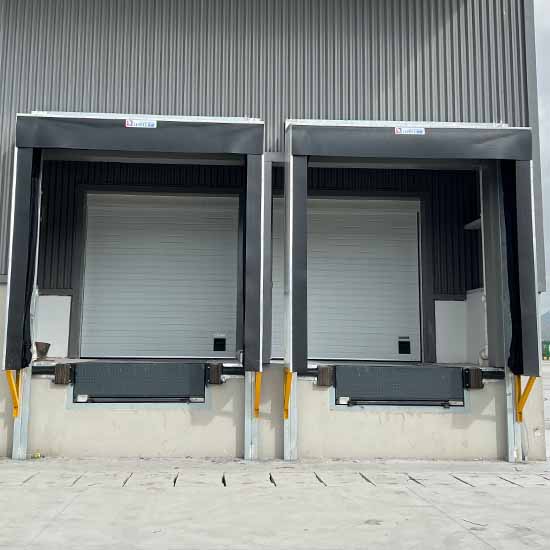Logistics management is one of the key links in the operation of modern enterprises. And its efficiency and accuracy directly affect the competitiveness and profit of enterprises. As an important part of logistics management, fixed hydraulic dock leveler plays a key role in improving logistics efficiency and saving time. In this paper, we will discuss the position and potential of fixed dock leveler in the logistics chain. As well as their significance to enterprise logistics management.
Definition and Function of Fixed Hydraulic dock leveler

Fixed hydraulic dock leveler is suitable for large-scale enterprises, warehouses, stations, wharves, warehousing and logistics, postal transportation, logistics distribution, etc. That have frequent loading and unloading of goods and different models. It is composed of mechanical system, hydraulic system and electric system, and can realize the rapid loading and unloading of goods.
It is composed of mechanical system, hydraulic system and electric system. That can realize the rapid loading and unloading of goods. Once installed, the main board surface of the warehouse platform aligns horizontally with the upper plane of the dock leveler, ensuring that other operational tasks on the platform remain unaffected in the absence of loading and unloading activities. This configuration represents the most prevalent loading and unloading solution currently in use.
Fixed hydraulic dock leveler as the core node of logistics chain
Fixed loading and unloading platforms play the role of the core node in the logistics chain. It connecting the logistics links between suppliers, producers, distributors and final customers. Through stationary loading and unloading platforms, goods can be transferred and handled quickly and efficiently. Thus speeding up the process of the logistics chain and improving the overall efficiency.
Fixed dock leveler vs other dock leveler

Fixed hydraulic dock leveler vs temporary dock leveler
Stationary hydraulic dock leveler: fixed in the logistics site or warehouse, usually composed of concrete or steel structure. With stability and durability, can be used for a long time.
Temporary dock leveler: usually temporary loading and unloading platforms. Such as closed compartments of mobile trucks, temporary cargo platforms, etc.. Which are convenient for temporary loading and unloading and transshipment of goods.
Fixed dock leveler vs air cushion type dock leveler
Fixed hydraulic dock leveler: usually use mechanized loading and unloading equipment, such as lifting platforms, conveyor belts, etc., applicable to a variety of ground conditions and environments.
Air cushion type dock leveler: Air cushion technology floats and transfers cargo, typically employed in specialized environments or scenarios necessitating the handling of substantial loads. However, it entails higher equipment and maintenance costs.
The Innovation Engine of Fixed Dock Leveler

With the development of science and technology and the continuous improvement of logistics demand. The fixed dock leveler are also constantly innovating and developing. Modern fixed dock leveler are not only simple loading and unloading facilities, but also integrate advanced technologies such as automation and intelligence. For example, the loading and unloading platform of SEPPES Company can be integrated intelligently through oh control system, electric-hydraulic power unit, regulating plate and tongue plate working together. It greatly improves the loading and unloading efficiency and accuracy, and saves a lot of time and labor costs.
Fixed dock leveler as an important part of the logistics chain, it plays an irreplaceable role in improving logistics efficiency and saving time. In the future, with the continuous progress of science and technology and the constant change of logistics demand, the fixed hydraulic dock leveler will continue to play the role of innovation engine, bringing more convenience and benefits for logistics management.





